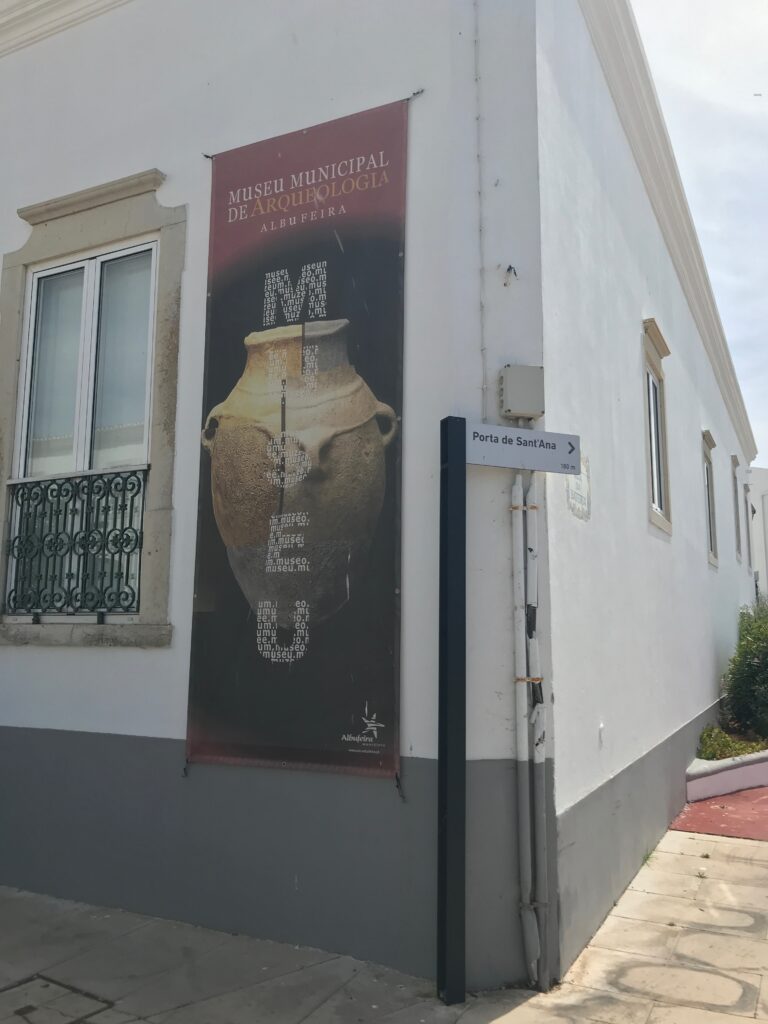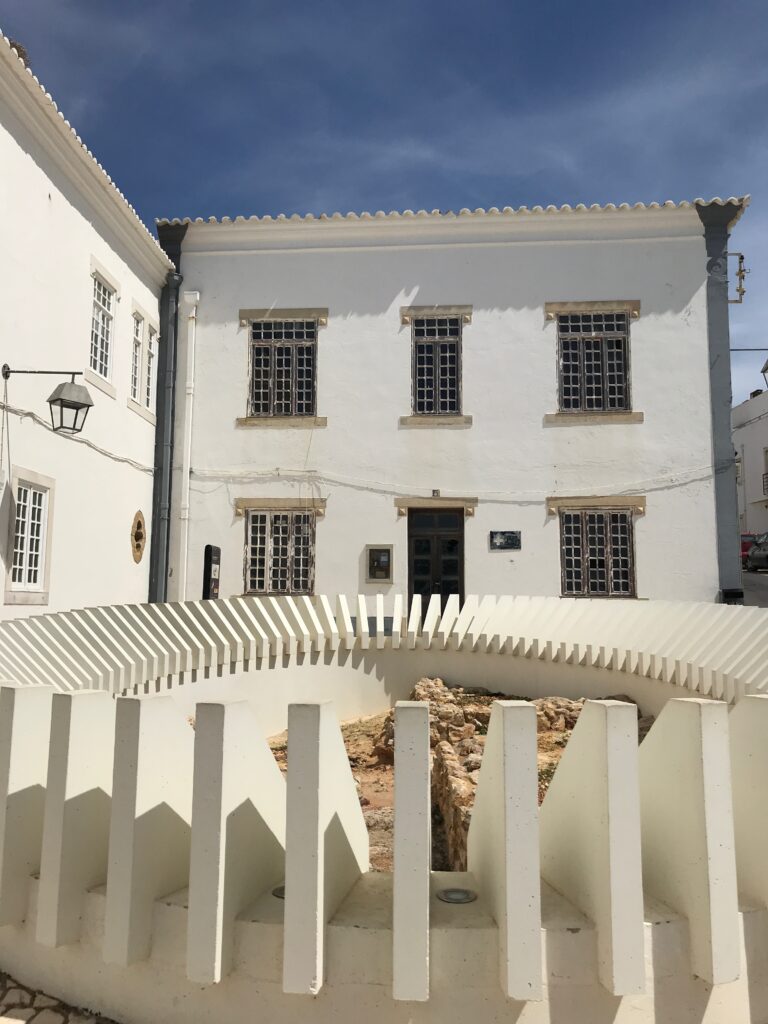In May 2023, I visited the beautiful and picturesque Algarve coast in Portugal. I visited the Museu Municipal de Arqueologia in Albufeira situated in the Old Town. As a MA Museum studies graduate, I am always intrigued in how museums approach their curatorial processes and how this changes around the world.

History of Albufeira
The museum is a small space, but has so much to discover as an addition to visiting the Old Town in Albufeira. The collection houses the history of Albufeira from prehistory to the 17th century that includes, the Romans, Islamic and Modern periods. The highlight of the museum was the examples of architecture that had existed throughout history and to see how this influenced modern day architecture. The space was very open, had a lot of natural light and looked out to the coast – a wonderful location that emphasised the passing of time. I loved exploring the town and learning about their unique and beautiful history and architecture. The displays were not text heavy and allowed enough space to view the artefacts in a 360 degree way, I liked that the artefacts were not overshadowed by a lot of information. The museum offered each information panel in English and Portuguese helping visitors enjoy the exhibitions in an accessible way through videos, objects and text.
The museum had several gallery spaces to explore that presented Albufeira’s history in a chronological order from prehistoric, Roman, Islamic and then Modern. I thought the Roman mosaic was extremely fascinating. My local museum is dedicated to the Roman settlement in my local area history and it was interesting to understand how far the Roman empire expanded, also the styles and artistic movements they introduced. It is also incredible that these artefacts have survived the test of time, and because of the conservation and preservation of the museum, we can have an incredible insight into the past.

Outside of the museum was another incredibly interesting site, this was the Place-of-arms that does not look like much in present day but was once the old jail building of Albufeira. The building next to the site is currently the Albufeira Music Conservatory (see picture below) with an archaeological excavation site. This area outside the building was excavated in the year 2000. The excavation revealed residential structures and silos dating to the 12 or 13th century. Even more fascinating was the discovery of fig seeds, which historically was an important production for the town that dated before the Arab occupation and after. Fig seeds like spices and other ‘exotic’ products were highly sought after and figs were the target of piracy because they could reach a high value on the market. Despite history changing, attitudes and values subtly permeate throughout cultures and generations. The fig seed represents an economic part of Albufeira’s history and is important to historians in understanding the past.

Final thoughts
The museum and excavation site was a fascinating and captivating experience that is an affordable option for many tourists wanting to learn more about Albufeira’s history and culture. The museum ticket was around 1.06 euros and there was a lot to explore and discover. The excavation site was free and a feature of the courtyard area outside the museum. I loved the Old Town and exploring the alleyways and decorative architecture. I would recommend visiting the museum when travelling to the Algarve coast. Old Town is a captivating place with so much culture, history and things to try!
Read Amy’s Portugal Diary 1 exploring the Old Town in Albufeira.
Stay updated!
Keep updated with the latest short stories, history articles, book, theatre, museum and gallery reviews and follow Amy on Instagram!
For more content click here.
Amy is available for a variety of editorial and creative services, for more information view SERVICES.

Sign up to Amy's newsletter for exclusive content, updates and reviews!


Pingback: Algarve, Portugal Diary 1 - amyleighchandler